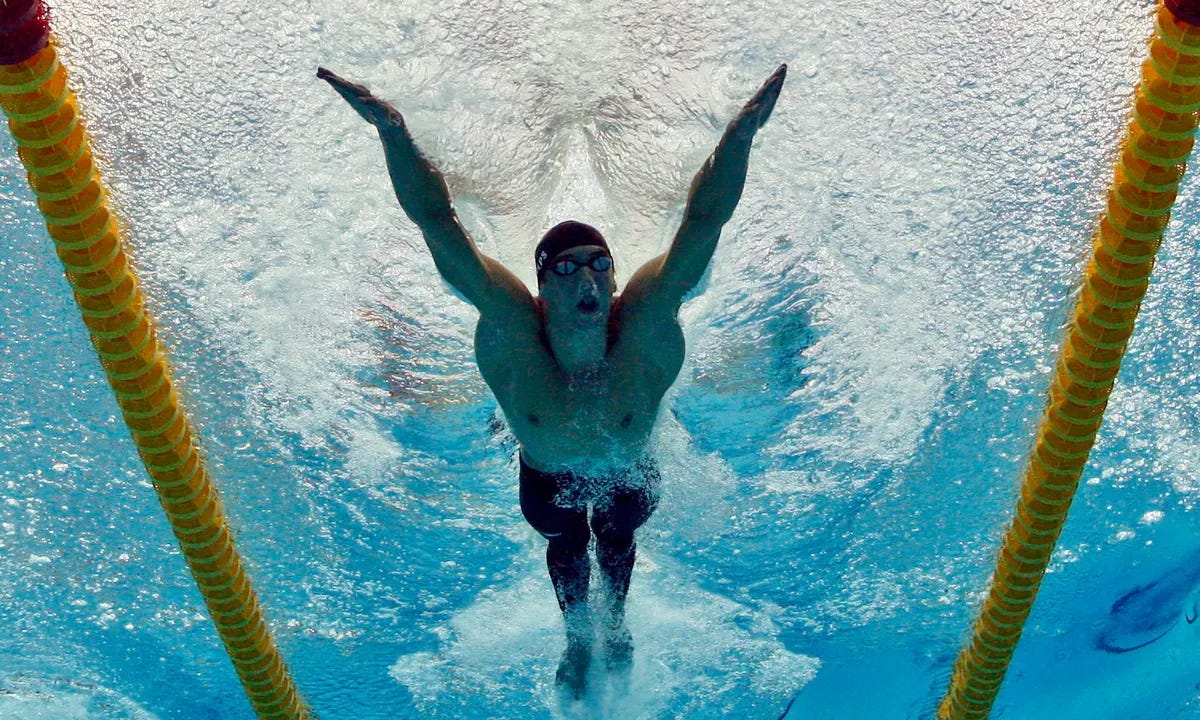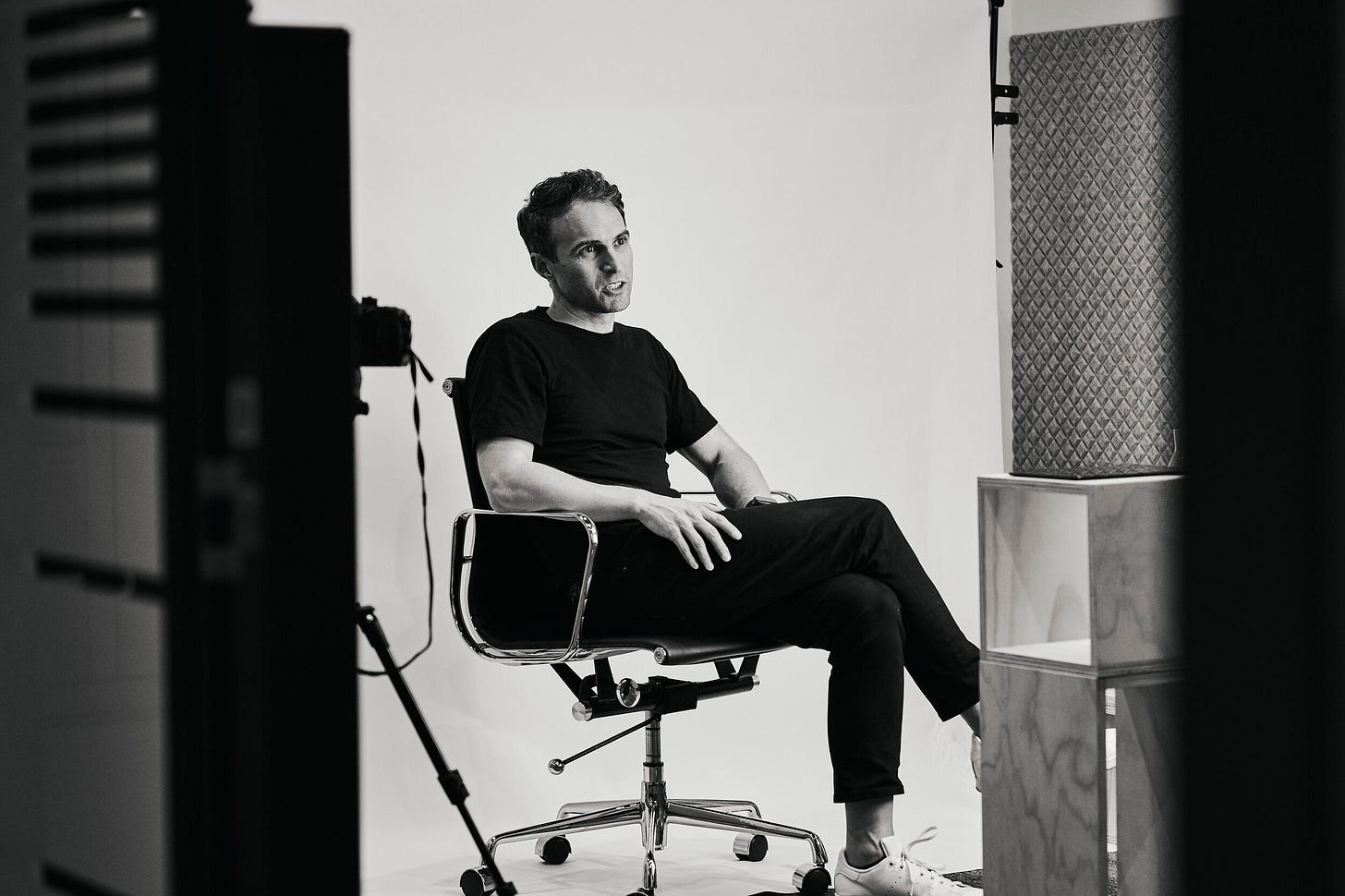New Discovery: How Brains Create Mental Imagery – It’s Different To Perception! FUTURE MINDS
Curated, Science-Driven Insights into the Brain.
Hello everyone!
I trust you've been finding value in our revamped newsletters. Life's been treating me well, and this weekend, I had the pleasure of navigating our small boat along the stunning Australian coastline. Interestingly, these family boating adventures tie back to our newsletter's theme. As a beginner at boating, I've realized the importance of sharpening my focus amidst the numerous marine challenges. It's quite an experience, trying to navigate the busy waters while taking on board my kid’s and wife's shouts of "Slow down, Dad!" or "Spot that boat ahead!" It’s an exercise in multitasking, focus and deep breaths.
This week's newsletter is all on mental imagery and our new paper that just came out, enjoy!
Eyes Wide Open: The Latest in Mental Imagery and Aphantasia
How Brains Create Mental Imagery – It’s Different To Perception!
Have you ever closed your eyes and imagined a vivid picture, let’s say a green apple? (I know many of you have aphantasia and the answer will be a clear NO). If you do have imagery, have you ever wondered why that experience feels so different from actually seeing something with your eyes? It's like the image in your mind is a bit hazy, almost like a dream, compared to what you get when you look at something.
Before we dive any deeper, let’s clarify a few neuro terms –
Normal Visual Perception (seeing the apple) –Visual perception occurs when neurons actively fire because information shot up from the eyes to your brain.
Mental Imagery (imagining the apple) – Mental Imagery is the ability to create a picture internally, without the need for external stimuli. Think of it as your mind's unique way of painting scenes, replaying memories, or even creating future scenarios, watch this short video if you want to know more.
For a long time, we scientists have presumed that when you or your brain creates a Mental Image of an object – imagining the apple - your brain is pretty much working the same way as when you're looking at the apple (Visual Perception), just doing it in reverse (not from the eyes).
In our latest research paper, we investigated the hypothesis that a Mental Image is created by a different mechanism to Visual Perception. We tested the hypothesis that creating a Mental Image might not be about these neurons firing more, but rather about reducing or quieting the usual background activity in the visual cortex.
Our team's research investigated this question and revealed some fascinating findings!
What We Found:
1. Different Neural Mechanisms - Making a Metal Image (imagining the apple) and Visual Perception (seeing the apple) work differently: When we see something, the neurons in our brain fire more, creating our conscious experience. However, to form a Mental Image the brain seems to be turning down activity, particularly actively related to things that are not imagined.
2. Imagery Suppression - Mental Imagery Suppresses Other Visuals: When we imagine a scene, it's like putting a spotlight on a performer while dimming the lights on others. Our data suggests that when we vividly imagine something, the brain may suppress or "dim" other unrelated visual signals.
3. Unique Visual Representation - Mental Imagery Isn’t Just a "Weak Version" of Visual Perception: Some may think of Mental Imagery as a weak version of Visual Perception. I indeed referred to it this way in many of our papers! But our new findings hint that Mental Imagery has its unique way of shaping visual representations, more through modulating non-imagined content than excitation – like erasing away or carving out the stuff you don't want, leaving the final shape behind.
4. Feedback Signals in Visual Imagery are Similar to Attention: When imagining something, certain areas of our brain seem to tone down or "dampen" unrelated visuals. This mirrors some processes observed in attention. Could it be that the way we imagine things is like how we focus our attention? Our new discovery suggests exactly this.
What It Means:
Understanding the Brain’s Processes: This research highlights the distinct ways the brain processes what we see versus what we imagine.
Applications in Attention Research: Our findings echo some principles observed in attention research. It opens doors for future studies to explore whether imagery and attention employ similar brain mechanisms.
Aphantasia: This discovery also has relevance to understanding aphantasia. If we know how a mental image is created in the brain e.g. using neural inhibition as our new data suggests, then this is a candidate mechanism to examine in aphantasia. This is an interesting new avenue for researching what causes aphantasia and how to characterise it. It makes sense that differences in your inhibition exist for aphantasia as our prior research HERE shows some differences in attentional mechanisms for those with aphantasia. It’s an exciting new area of research.
Caveats and Next Steps:
As intriguing as our findings are, they are based on behavioural experiments. This means we can't definitively say what's happening inside the brain. Yet, the patterns are compelling and warrant further investigation.
In the future, we aim to:
Investigate the role of inhibition in Aphantasia.
Delve deeper into the mechanisms behind the observed suppression effects.
Understand if imagery of more complex objects like faces or moving objects, that are processed in brain areas higher up in the processing hierarchy still use inhibition.
To sum it up, our journey into the realm of imagination and perception has unveiled some captivating insights, and we're excited about the endless possibilities ahead!
Here is the link to the actual paper if you want to read it.
Neuro Hacks: Craft a Better Life
Like many elite athletes, we too can utilize the power of mental imagery to enhance our performance (if you have it ). For years, sports psychologists have emphasized the remarkable impact of visualization, backed by numerous research studies mostly confirming its efficacy. Although the relationship between visualisation in sports and its effects on confidence is often hard to untangle with the direct effects on performance.
Take Michael Phelps, for instance. Widely celebrated as the greatest swimmer ever, Phelps didn't just rely on physical strength. He practised visualization meticulously in a technique dubbed "watching the videotape." In this mental exercise, he'd vividly imagine every nuance of his race, from the initial dive to the final touch at the wall, including potential hiccups and strategizing his responses.
So, whether you're gearing up for a major or important event, remember visualization can be your secret weapon. By anticipating various scenarios and rehearsing your desired outcomes mentally, you set the stage for stellar performance. At the very least it will boost your confidence!
Mental Meanderings
Have you ever experienced a situation where your visual perception (what you see) contradicted your mental imagery, leading to surprise or confusion?
Do you believe that the images you visualize in your mind can be as vivid and detailed as what you see with your eyes?





until recently, i had no idea that my (limited) level of mental visualization was other than "typical". i am an intensely visual learner, and an avid photographer - but the best i can visualize of an apple (say) is ghostlike. i am fascinated by this subject.
Not sure if it's because potential hyperphantasia or because as you said, your findings are based on behavioural experiments, but I have to say that the part "when we vividly imagine something, the brain may suppress or "dim" other unrelated visual signals." is completely bollocks.
Now, I also don't know if this supposed to mean that when we imagine things they are less detailed and hyperfocused than actually seeing things, or that when people try to imagine things whilst still having visual stimuli the former is "dimmed" in favour of the latter, but from my experience both statements would be false.
Good indicator is that recent survey you did when the sliders had to be moved so the picture got more detailed, and we were to set it to the level we imagined it. There my mind even built a "setting" for each picture, with details regarding things that weren't present on them, but were "behind" the PoV.